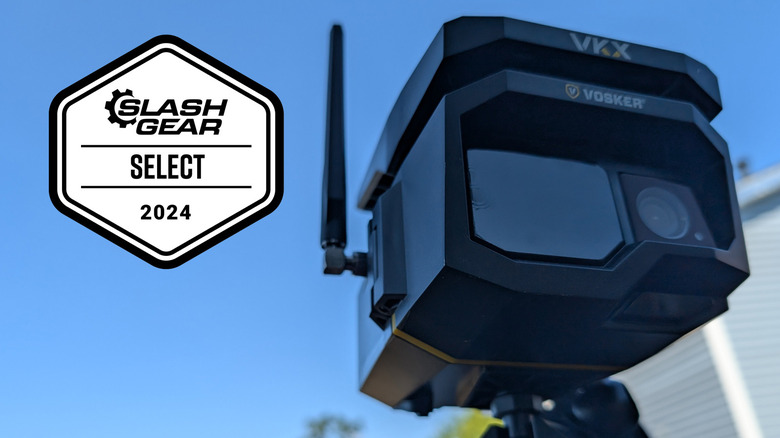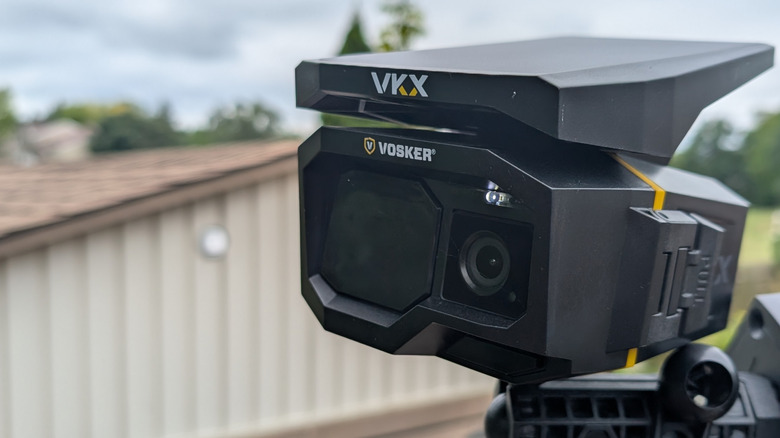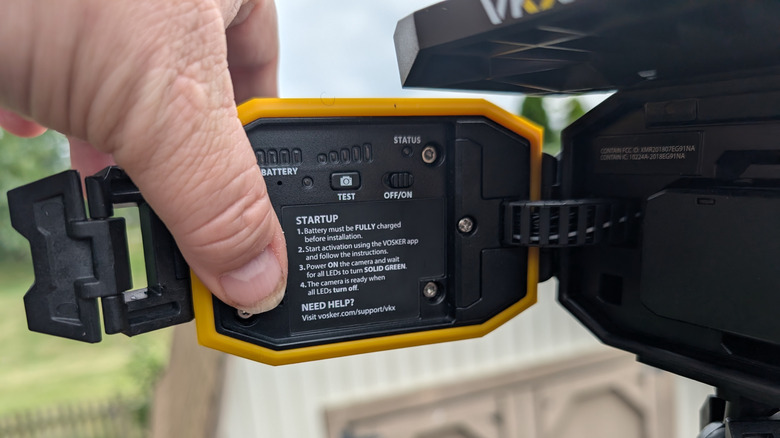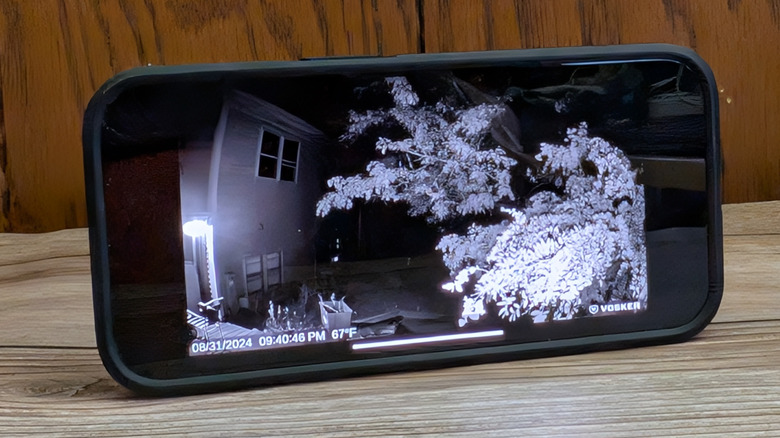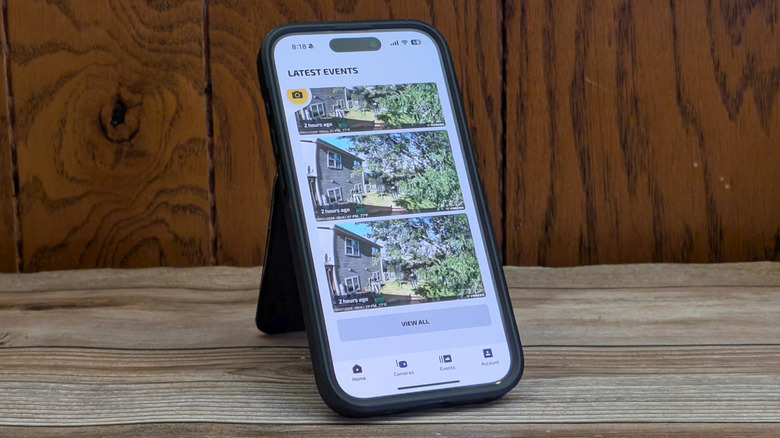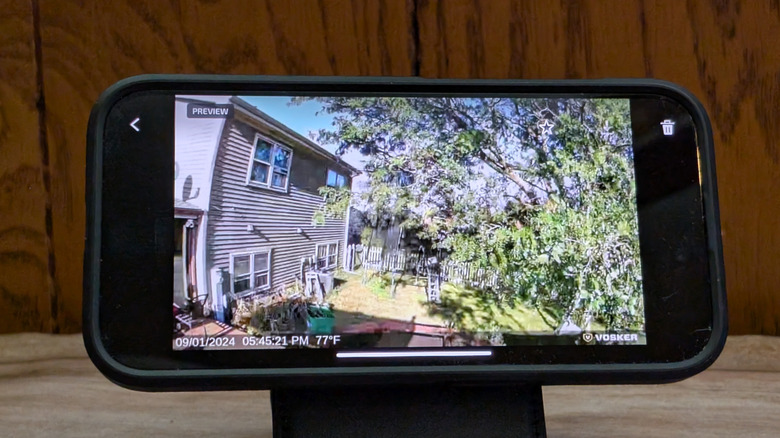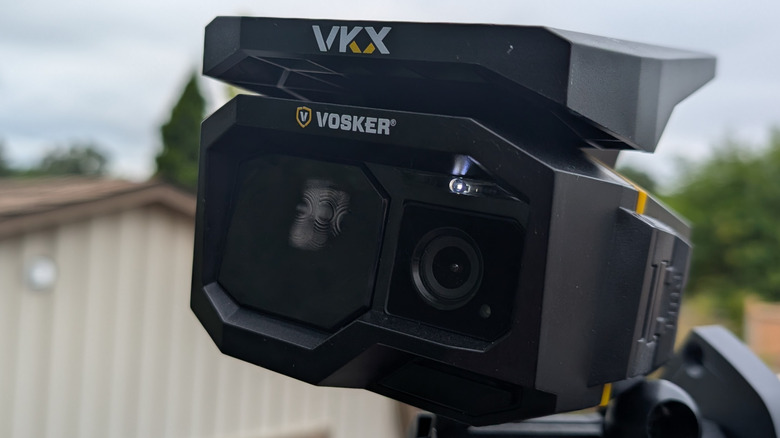Vosker VKX Review: The Right Solar-Powered LTE Camera For The Right Job
- Durable
- Ready to go out of the box
- Can be placed anywhere
- Mobile Connectivity
- Solar charged
- Subscription price
- App UI is less than ideal
- Photos are very small
We may receive a commission on purchases made from links.
One of the main problems you get with smart home security cameras is the need to be connected to Wi-Fi. Often, power is a concern too. They greatly limit where you can place a camera. Namely, you need to place it somewhere near your home. But there are a lot of use cases for cameras that are not near your home, such as motion-activated remote cameras, for keeping an eye on remote locations. That's where the Vosker VKX camera comes into play.
This is a smart, app-controlled, video camera designed to be placed anywhere — or at least anywhere there is cellular connectivity because — you guessed it — this camera uses LTE to connect to your phone. Not only that, but Wi-Fi isn't even an option, so even if you place it around your house, you'll still be required to be connected to the cellular network.
What this adds up to is a very solid camera that you can put anywhere you might want it. But that freedom comes with several caveats that are important to be aware of before you put down your hard-earned dollars. I've been using a Vosker VKX camera review sample provided by Vosker for about one week, and this is my full review.
Let's be clear
First of all, in case it wasn't obvious, I should start by saying, this is not really a camera meant to be kept around your house looking for porch pirates. It's meant to be used by individuals looking to keep an extremely remote eye on a given area — an area that doesn't necessarily have easy access to electrical power.
Most of the time, when you're viewing the footage from this camera, you're going to be watching a few frames of something that happened around the time of the event. Most of your viewing will not be on a smooth, real-time video feed.
Rather, this camera is designed to sit out in a field or a forest, and capture movement of humans, animals, or vehicles in order to notify you when something happens. It would be accurate to say that this camera is designed to be reactive, rather than proactive in its detection.
By default, the camera only records events determined by filters you set up. When that event happens, you'll get a notification on your phone. Once you check it, you can decide if you need to see things more smoothly. But I'm getting ahead of myself. Here's what the camera actually is.
Rugged and outdoor
First and foremost, this camera is designed to be outside. The housing for the camera is a ruggedized plastic and not at all subtle. It's large for a camera. It comes with a mounting plate and adjustable arm and all joint, meaning you can aim this camera just about anywhere you want once it's mounted. The camera has a frameless solar panel mounted on top of it, to keep it juiced up while it's in place.
As you face the lens, on the right side, there's a large clip that holds the camera closed. A thick rubber seal keeps the insides dry, and the clip compresses the housing closed nice and tight. Inside the casing you'll find a pretty large battery, a status light, a test button, and a battery indicator.
If you need to charge the battery, you can pull it out from here. The solar panel does a good job of keeping the camera topped off, assuming you have the camera in the sun. How it will stand up to being in a shaded area is hard to tell; your mileage will likely vary. Vosker says the camera can run autonomously for six months using the battery and solar panels. That's obviously under ideal circumstances. The good news is, the 14,000 mAh battery should be large enough to keep the camera going for days at a time, even if there isn't any/much sun. It's also removable, so if you need to charge it, you don't need to take down the whole camera.
Compromises galore
One compromise you get right off the bat comes in the photos and videos you'll get off the camera — more so video. It's also worth mentioning, that these compromises all make sense in the context for what this camera is and who it's for. Again, I will emphasize, if you want a security camera for your home, this is not that — not unless your home is not connected to the electrical grid, that is.
The first notable compromise is that this camera maxes out at 1080p resolution. These days, 2K and 4K cameras are becoming more common, so this is a pretty big trade-off right off the bat. Also, while you can snap a photo on-command, there's no way to view a live video feed of the camera. I'll dig more into this when I talk about the app, but that's an important point to note.
Finally, arguably one of the biggest compromises — and also not surprising — this camera comes with a subscription fee you'll need to pay each month in order to keep the device functional. Actually, it comes with one of three subscriptions raging in price from $9/month up to $18/month. The camera runs on LTE, so there was really always going to be a subscription fee of some sort. The various tiers of plans determine how far back in your history you can look and how many FHD photos and videos you can download.
Diving into the app
When you open the app, you get a list of events that the camera has recorded, and by "events" Vosker means "literally anything happened." Events include a person being seen, an animal being seen, leaves moving; it's basically anything. In short, there are a ton of events. That's a good thing and a bad thing.
You can filter events according to what happens — people, animals, vehicles, or "other." The benefit to this camera having such an itchy trigger finger is, you end up with a pretty good record of everything that happened in front of it — especially if it's been a windy day. You can try to turn down the sensitivity and set boundaries for where movement would need to be for an event to be recorded, but it doesn't really help. Those events, by the way, can be recorded as photos or video clips — configured in the app.
If you go with video clips, you can tap on any event and get a ten-second clip of what happened, which consists of three frames — stop-motion style. From there, you can request a full HD clip be exported to your phone. You can also request a photo be sent over, but oddly enough if you go that route, you can only get a current photo, rather than a photo from the event you're looking at. Also, keep in mind those subscriptions we talked about.
The Basic plan includes ten photos or videos, the Alerted plan includes up to twenty, and the Elite plan gives you forty requests per month. With a camera like this, that should be enough — the nature of remote cameras like this generally will mean there won't be much happening. Plus, processing and transmitting those images takes power.
Photos and video
This concept of downloading videos and photos is one of the biggest weak points for the Vosker VKX. It's a little frustrating when companies put a hard cap on the number of times you want to do a perfectly normal thing with a device. In this case, the act of capturing photos and videos are literally what this camera is designed to do.
Plus, there's another level to it. When you open an event, you can request the Full HD clip, which converts that stop-motion clip into the full thing. On the other hand, if you tap on "take a photo" that just takes a photo of what's going on in front of the camera at that moment, not during the event that you're previewing. It's a little confusing. Again, the strategy here seems to be reducing the processing power needed for the camera, which is understandable.
At night, the camera also has IR sensors and night vision which is pretty necessary for a camera like this. As far as image quality is concerned, as stated, video 1080p. Meanwhile, photos are only 640 x 360 pixels which are really only good for a phone screen.
Beyond that, the sensor is on par with other cameras of that resolution, but there's a bit of a fish eye effect in the captured images. It's not egregious, but it's noticeable.
Vosker VKX Price, availability, and verdict
Overall, this is a nice camera from a one-stop-shopping standpoint. You get everything you need in the box to drop a camera anywhere you want to. From mounting hardware to LTE connectivity, to storage, to power, everything you need is right there. That all comes in at the price of $249.99 — considering the durability, and the expected uses for a camera like this, that's about what you might expect.
You can buy the camera on Vosker's website or on Amazon, and you'll get good camera quality, anywhere in the world. The app needs a little TLC, and the subscription, while understandable, might be enough to keep buyers at bay. But if you're the right kind of customer, and you appreciate durability, and flexibility in your camera, and you need to keep an eye on an area that is outside your Wi-Fi range, this could be a very good buy.
